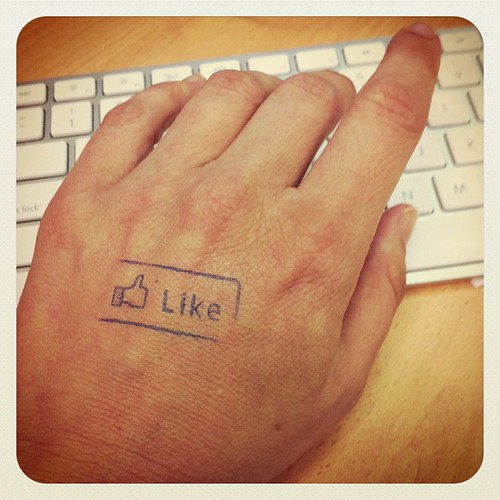 Written by our guest blogger Sarmista Aun
Written by our guest blogger Sarmista Aun
Facebook PPC ads are a great tool for brand promotion but Facebook advertising management is not easy. You have to be a Facebook deciphering expert to effectively utilize PPC ads.
Social media is a great place for business promotion and there is no doubt that Facebook is the best platform of them all. In fact, it’s one of the three biggest PPC players in the world. It’s true that social media analytics tools don’t provide enough data but once you examine the paid Facebook ads, you can learn a lot of valuable things.
To understand the various aspects of Facebook PPC and its analysis, I am going to use SEMrush Facebook statistics and other resources.
Domains Vs. Apps Vs. Groups – Instead of consumer products and services, advertisers like to endorse groups and apps on the world’s biggest social media. Out of 100%, 58% of ads are about domains, 39% are about groups and 3% are about apps. That means 42% of total ads don’t even let you leave Facebook. The PPC publishers consider it as a semi closed platform and prefer to give ads that have the ability to keep users inside the social media site. In fact, though the group ads are only 39%, they receive 56% of total clicks. So, if you want to provide Facebook advertising management as a service, tell your clients that they must create a fan page before starting the ad campaign.
Countries – 50% of the total pay per click ads are given by ten countries. USA, UK and Germany are ranked at number 1, 2 and 3 which is quite predictable but the surprising thing is that Indonesia and Philippines also figure in top 10.
However, according to Alexa stats, India is the second country, not UK. Other ad data experts say that UK consumes 6.1% of the total ad market and the reason is the difference between financial conditions. India may have a population of one billion but UK has a far better economy and steady growth. Therefore, more and more marketers in UK are focusing on Facebook PPC ads.
Top advertisers by domains – Some of the top advertisement agencies are Adobe AdLens and Kenshoo. On the other hand, the biggest independent advertiser is Samsung as they maintain 5.8 percent of the top 20 expenditure for ads. It’s a sensible move considering their current battle with Apple. The last member of the top advertiser list is AirBnB.
Top Advertising Apps – Facebook users are primarily Gen-Y audience and they don’t want serious content. They are mainly gamers and gamblers. That is why, you will find that the top 20 advertisement apps are games and the only exception is the app. The most popular games belong to either poker or casino segment. If US government ever decides to legalize online gambling, the social media giant will make millions of dollars every day.
How some brands accommodate PPC – Let’s take a look at some of the major retail brands. Walmart is highly active on the world’s biggest social media network and they have given more or less 6500 ads in the last 3 months.
On the other hand, Amazon doesn’t spend a single penny for FB PPC. It seems that they don’t consider the gamers and gamblers as their potential customers. Besides, the brand is so popular all over the world that they don’t need to tell people what they sell.
EBay follows a completely different strategy. Their Facebook ad management team targets India, Thailand and Russia based customers and gives ad for consumers in those countries but they seldom spend anything to attract USA customers.
The aforementioned data proves one thing. Facebook may offer Pay per Click and Pay Per View ad options but it’s not a core ad service as AdWords. It’s not a sales tool. Marketers use it for branding and general recognition but not for increasing sales.
Trends – When the world’s leading social media site launched its share in the US stock exchange, the outcome was dissatisfactory. Some investors even thought that the social media giant cheated them as the stock price hit rock bottom soon after the launch. The bad effect of share prices also affected the number of ads and mainly USA based advertisers stayed away from the social media giant.
Facebook is here to stay no matter how their share performs in the stock exchange. The company is ruling the PPC market and when it comes to brand enhancement, they have no competition.
Author: Sarmista Aun is a pay per click campaign specialist. She provides expert guidance on social media advertising and each metric of a PPC campaign. She is a professional blogger and has written numerous articles on internet marketing, social media and web design.
 A study executed by Social Bakers shows that 93% of the most engaging posts on Facebook are photos. Their data shows that only 2% of the most engaging content on Facebook is generated by links, another 2% by videos, and 3% by status updates. Images are more engaging than ever, so get your fans engaged with strong visual content including quotes (dont forget to insert your brand), pictures from events, and of course infographics. Get visually enticing or be ignored!
A study executed by Social Bakers shows that 93% of the most engaging posts on Facebook are photos. Their data shows that only 2% of the most engaging content on Facebook is generated by links, another 2% by videos, and 3% by status updates. Images are more engaging than ever, so get your fans engaged with strong visual content including quotes (dont forget to insert your brand), pictures from events, and of course infographics. Get visually enticing or be ignored! With small and local businesses gaining main stream attention, particularly through
With small and local businesses gaining main stream attention, particularly through 
